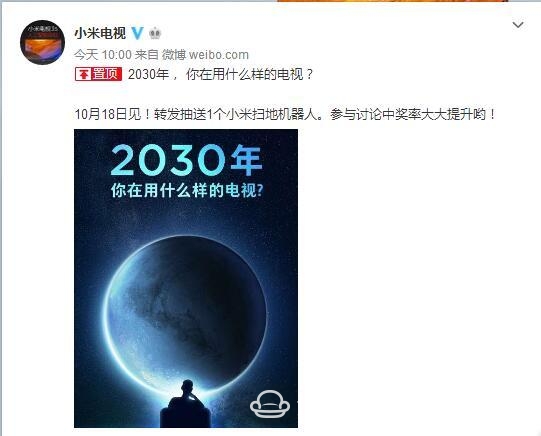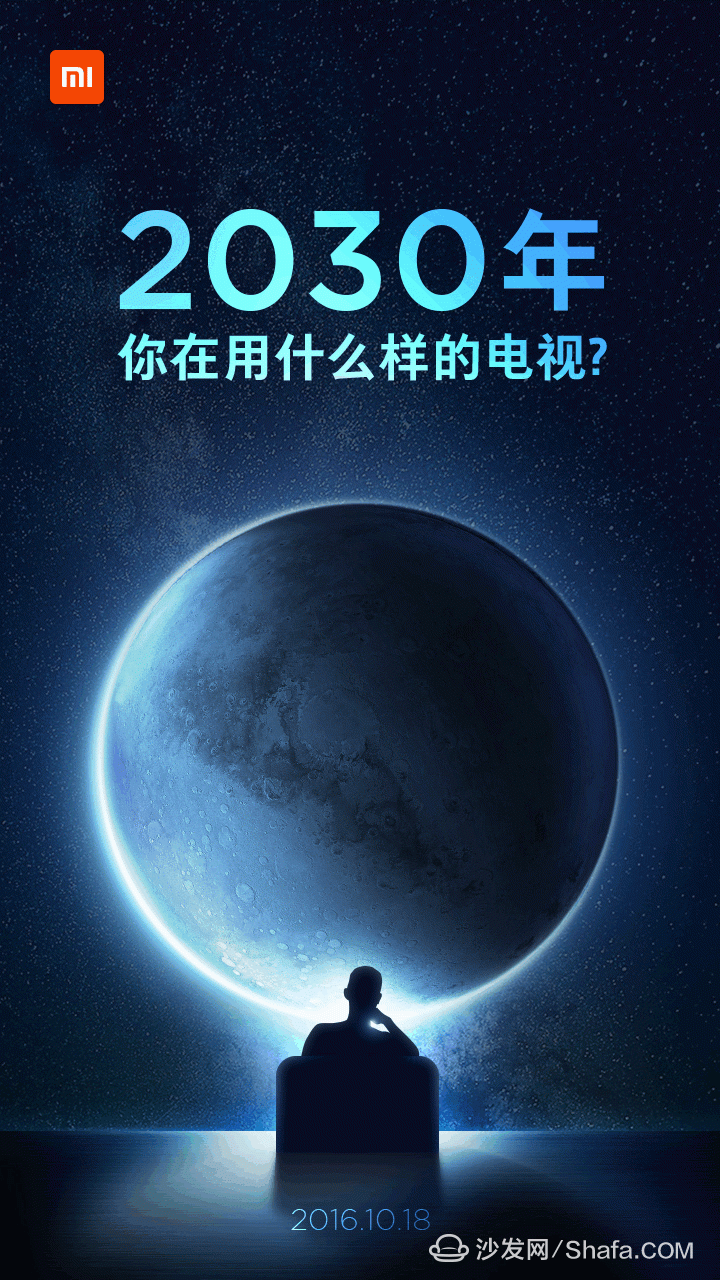
Modern smart TVs are new products based on the impact of the Internet. Compared with other devices, TVs have the advantages of large screens, good audio and video effects, and high participation (participation of the whole family). They have stronger interactive interaction effects, and support personalized customization and compliance. Preference push, carry more functional models, such as: live, on-demand, games, education, life, etc., can be used as an important entrance to the information-based life ecosystem. This is also an important reason why smart TVs have a lot of exploration space in the future.
Of course, at the same time as the development of smart TVs, products with the same role as smart TVs - smart VR wearables, smart projectors and mobile phones, etc., in the collision of these opponents, smart TV can still exist in a few years? Did you still call the TV at that time?

Today Xiaomi Company released a poster content: “What kind of TV are you using in 2030?†Seeing the poster involuntarily associates Xiaomi TV's role in the entire domestic industry. I remember that at the beginning of the boom in LCD TVs, many local tyrants switched their big head TVs to ultra-thin LCD TVs. Why local tyrants? The reason is because the prices are too expensive, and there are tens of thousands of tens of thousands below 50 inches. This price has continued until the arrival of 47-inch millet TV 1 on behalf of 2,999 yuan, it is announced that price monopoly has been broken. At one point, a wave of buying was created. At the same time, it is also necessary to let the price of the friend sell, the overall price of the entire smart TV is reduced by at least half; now about 50 inches of the TV can be won by about 3,000. The reason why friends and businessmen have to put up prices is mainly because I believe everybody understands that they are not unrelated to Xiaomi.

Returning to the previous discussion question: “What kind of TV are you using in 2030?â€; if Xiaomi broke the entire television violence market, then you want to establish a foothold in this TV industry to restore interests. This is obviously Walking cost is not a long-term solution. Products without core technology will always be accepted by only a few people. So millet accelerated the upgrading of television products, millet TV 2 / 2s, millet TV 3 / 3s; ​​price is still the same, but the difference is Xiaomi proposed a new concept of smart TV, such as split system: TV screen and host design, As the relationship between the computer host and the display, the advantage is that the host and the screen can be upgraded individually. Makes the entire TV never fall behind.

In fact, the design of the split system also created a new television era. When TVs need upgrading, they do not need to replace the screens that account for 70% of the cost of TVs. They can only upgrade the mainframe at a very low cost, and they can achieve TV at any time. Keep up with the trend of technology. Many friends and businessmen began to imitate, it seems that the entire TV industry once again was led by Xiaomi TV!

Judging from the current trend of answering questions, today's hardware homogeneity is serious. Only the innovation on the hardware is often not enough to impress users. Obviously, Xiaomi is also aware of this. The future is an important manifestation of “soft†strength. Whoever can grasp the user in terms of content experience will be able to obtain the winning power. Software has always been the strength of Xiaomi's MIUI team. After the launch of Xiaomi TV 3s last month, Wang Chuan said: “This is a sign that millet embraces artificial intelligence.†A brand new concept was proposed: Xiaomi artificial intelligence system “PatchWall puzzle wall†It is also an attempt by Xiaomi TV to apply the machine learning technology of the Xiaomi Brain team to the TV system. All intelligent products are served by human beings, so intelligent products can be made smarter and have their own brains. This is undoubtedly another attempt to explore innovation by Xiaomi TV.

In 2030, does TV still exist? Should it also call TV? The answer is there. As for the existence of ways, should we call a TV? This is difficult to say clearly. After all, judging by the development history of Xiaomi TV, at least smart TV is no longer a product that can only watch TV programs. Millet posters pointed to the development trend of television 14 years later. Is it necessary to redefine the television again on October 18? Mysterious posters can at least tell that Xiaomi has a clear path to the direction of TV innovation in the future. As for how to show us in advance, we will wait and see on the 18th!
